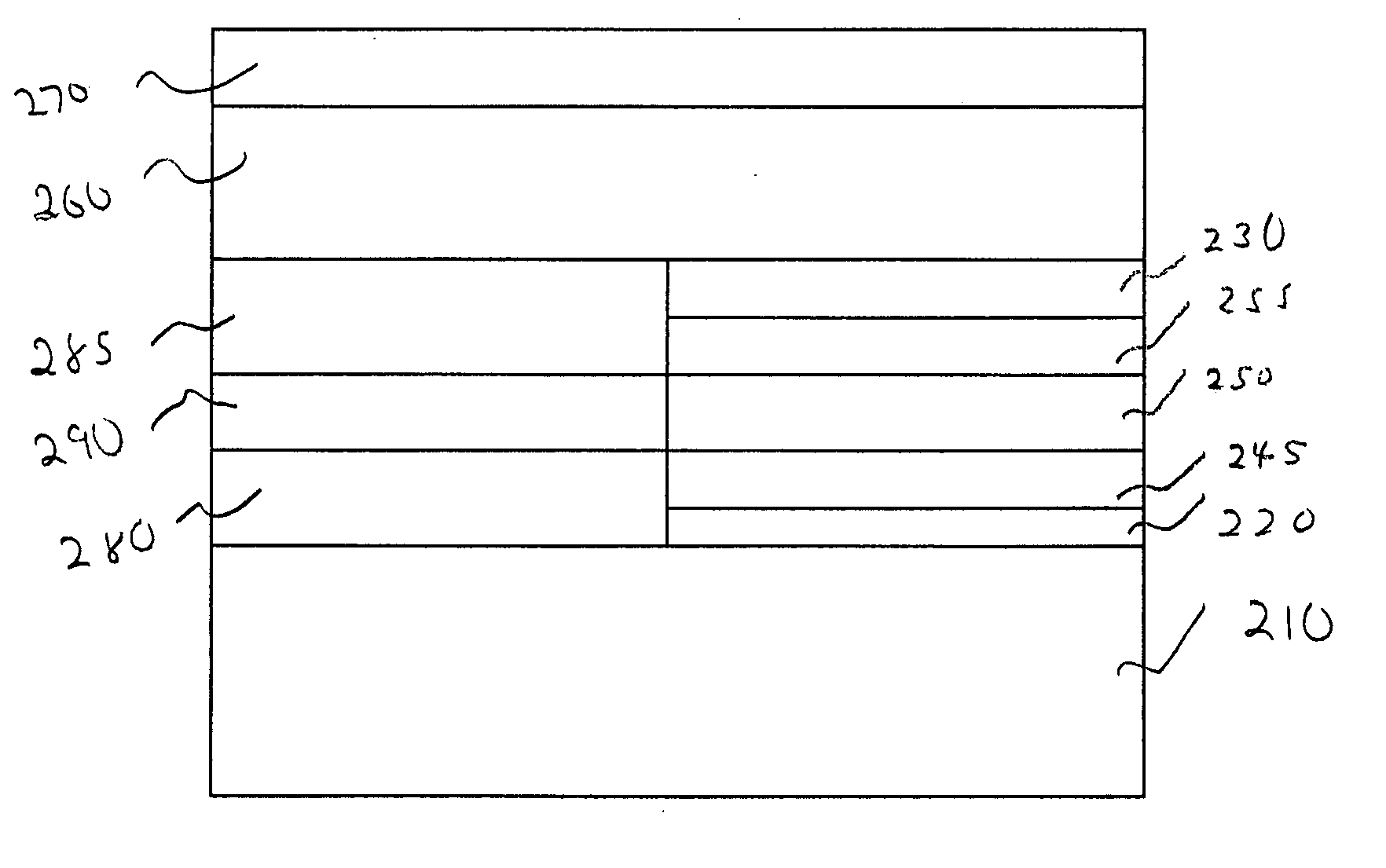Method and apparatus for a low parasitic capacitance butt-joined passive waveguide connected to an active structure
- Summary
- Abstract
- Description
- Claims
- Application Information
AI Technical Summary
Benefits of technology
Problems solved by technology
Method used
Image
Examples
Embodiment Construction
[0006]FIG. 2a shows an embodiment in accordance with the invention. On n-InP base wafer 210, active region 250 along with SCH layers 245 and 255 are grown using MOVCD (metal organic chemical vapor deposition) along with p-InP cladding layer 230 which is typically thicker, about 0.3 μm to 0.5 μm, than prior art p-InP cladding layer 130. SCH layers 245 and 255 typically have about a 1.15 μm bandgap. Typical growth parameters are a growth temperature of about 670° C., a growth pressure of about 76 torr, a V / III ratio of about 200 and a growth rate that is typically about 280 angstroms per minute. More details regarding active EA modulator structure 299 may be found in the patent application “Semiconductor Quantum Well Devices and Method of Making Same” filed Jun. 14, 2004, Ser. No. 10 / 867,037 and incorporated herein by reference.
[0007] SiO2 / Si3N4 mask 295 is then defined over part of p-InP layer 230. FIG. 2b shows etching, using for example, dry Cl and Ar RIE (reactive ion etching) an...
PUM
| Property | Measurement | Unit |
|---|---|---|
| Thickness | aaaaa | aaaaa |
| Structure | aaaaa | aaaaa |
| Capacitance | aaaaa | aaaaa |
Abstract
Description
Claims
Application Information
 Login to View More
Login to View More - R&D
- Intellectual Property
- Life Sciences
- Materials
- Tech Scout
- Unparalleled Data Quality
- Higher Quality Content
- 60% Fewer Hallucinations
Browse by: Latest US Patents, China's latest patents, Technical Efficacy Thesaurus, Application Domain, Technology Topic, Popular Technical Reports.
© 2025 PatSnap. All rights reserved.Legal|Privacy policy|Modern Slavery Act Transparency Statement|Sitemap|About US| Contact US: help@patsnap.com



